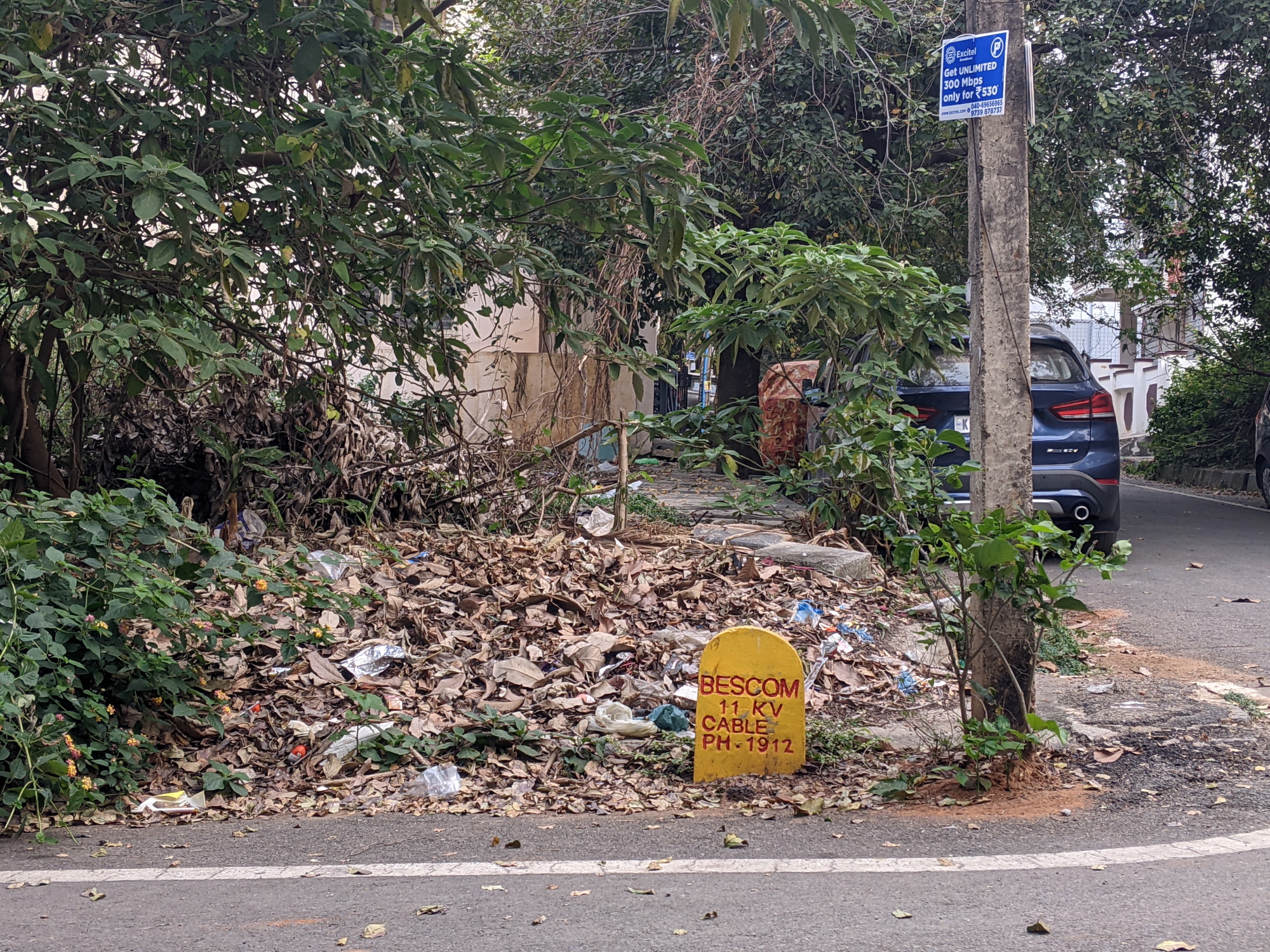Since December 2020 BESCOM has been converting its overhead (OH) lines to underground (UG) in the case of high-tension (HT) lines, and to Aerial Bundles(AB) in the case of low-tension (LT) lines. The data available on BESCOM’s website also reflects this conversion.

Converting HT and LT lines from overhead to underground and ABs offers significant benefits to both BESCOM and the consumers. While BESCOM saves on transmission losses and having to regularly prune trees under the lines, for citizens the main benefit is in safety from accidents caused due to snapped or sagging lines.
Conversion of overhead lines in Bengaluru

While underground cables made up 41% of the HT lines, and overhead 53% in 2019, by March 2021 the length of underground cables had exceeded that of overhead cables. As of Oct 2022, underground cables make up 63.5% of the total HT lines in Bengaluru, while overhead cables have been reduced to a much smaller 32% of the total lines.
In absolute terms, while the length of overhead cables in Bengaluru has reduced from 5843 kms to 4254 kms, that of underground cabling has risen rapidly from 4578 kms in March 2019 to 8403 kms in Oct 2022, increasing at more than 20% every year since March 2020.
In the case of low-tension (LT) lines, the conversion from overhead lines has been happening, with the only difference being that the bulk of the conversion has been from overhead cables to overhead aerial bundles (AB).

While overhead cables made up close to 85% of the LT network in the city, ABs were barely 9% in March 2019. Cut to the present, while OH lines still make up the majority of the network, their share has reduced to 57%, and ABs now make up 34% of the network.
In absolute terms, ABs have more than tripled from their length of 1788 km to their present length of 6066 km, while OH lines have declined from a length of 16804 km to their current length of 10252 km. At this rate, it is quite likely that the length of ABs would go past that of OHs in a year or two at the most.
Conversion of overhead lines in other districts of BESCOM
Apart from Bengaluru Urban, BESCOM is the primary power distributor to seven other districts – Kolar, Bengaluru Rural, Chikkaballapura, Ramanagara, Tumkur, Chitradurga and Davanagere.
While the conversion from overhead lines seems to be proceeding in gusto in Bengaluru Urban, rest of the districts paint a different story.

In the rest of BESCOM, while the length of underground HT lines has grown from 998 km to 1718 km in the past 4 years, the length of overhead HT lines has grown from 95,611 km to 1,13,643 km. The total share of overhead lines has stayed closed to 98%, decreasing by just one percentage point in the last four years. The interesting part is that the network itself has grown from 97,000 km to 1,16,000 km in the same period.
What this suggests is that while BESCOM has been busy sending existing overhead HT lines underground in Bengaluru Urban, it has also been busy adding 20,000 km of overhead lines in the other seven districts.
In the case of low-tension lines, the story is only marginally better.

The length of overhead lines has rapidly grown from 1,50,000 km to 1,62,000 km, and that of ABs has also quadrupled from a paltry to 380km to the current length of 1477 km. The UG line has also shown increase, but the main conversion in the LT network would be towards ABs. In terms of proportion, while overhead lines made up 99.5% of the LT network, this proportion has reduced by one percentage point with ABs making up 0.9% of the network.
Similar to the HT lines, while BESCOM is busy converting overhead lines to ABs in Bengaluru Urban, it has been adding more of them to the rest of the districts.
If the plan is for BESCOM to take all or most of its overhead lines underground or convert to ABs across its jurisdiction, it would make sense to add them where newer lines are being added instead of adding them as OHs and converting later. The reasons behind adding OHs in other districts while converting in Bengaluru could most likely be financial and budgetary. But, if this ensures that more areas are being electrified and getting regular power supply, there isn’t much cause to complain.

